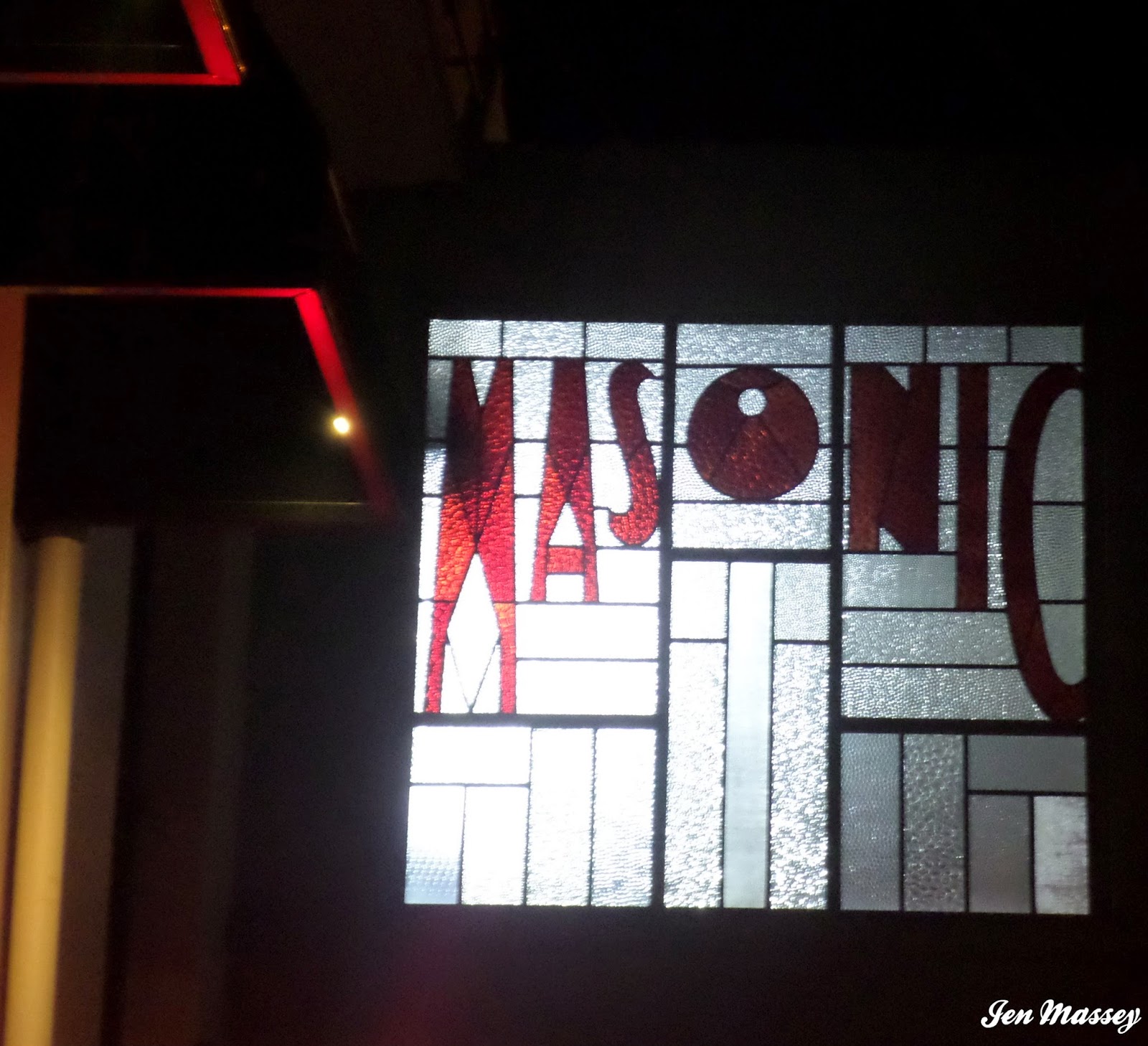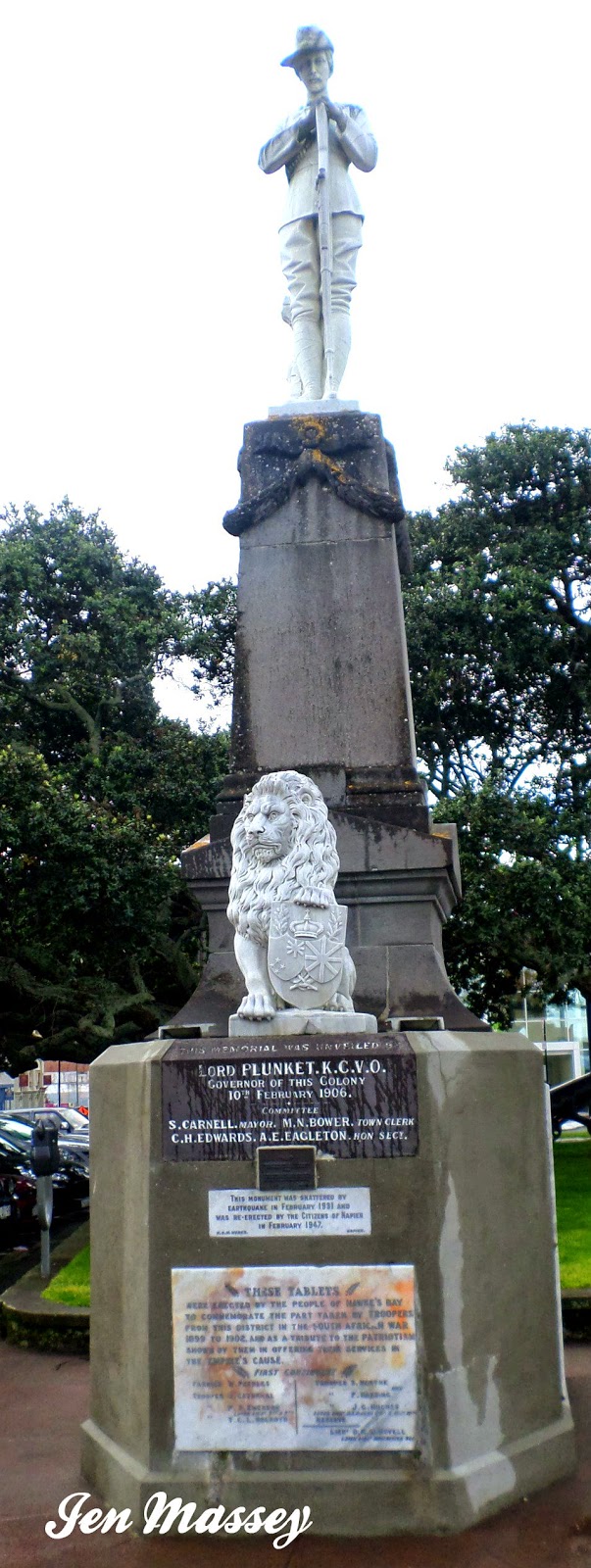Tuesday, 30 September 2014
Masonic Hotel
The present day and art deco style Masonic Hotel was built in 1932. However, there has been a hotel called the Masonic in this very site since 1861. The hotel has a very interesting history. The Queen stayed here during her 1953/54 tour.
to see inside watch this slideshow
Monday, 29 September 2014
Sunken Gardens
This garden is the place where originally there was a tennis court. This garden was formed in 1968. It is a hidden treasure as it is below road level and is a tranquil area for city workers to lunch in. Flights of stairs between pohutakawa trees (a New Zealand native tree) lead down to the garden.
The cast iron lamp is one of nine gas lamp posts that were converted to carbon arc in 1915 that were originally along Marine Parade. They pay tribute to the work of George Swan the Mayor of Napier between 1885 and 1901.
The cast iron lamp is one of nine gas lamp posts that were converted to carbon arc in 1915 that were originally along Marine Parade. They pay tribute to the work of George Swan the Mayor of Napier between 1885 and 1901.
This piece of art was chosen from a public competition to be part of the garden. It was paid for by Sir Lew and Lady Harris who did a lot for Napier. The sculptor described his work as a bio-morphic form, floating like a giant water lily. It was installed with lighting giving it even more appeal after dark however due to vandalism and theft that has had to be removed :(
The waterwheel was built in 1911 and donated to the city by a Mrs Phillips who lived an hour and a half south of Napier. It has an interesting history in itself. It was used on the Phillips farm first as a source of power on a milk separator and butter churn. Then it was used for shearing, sawing wood and pumping water. Later in 1915, it was linked to an electrical generator and produced electricity for the Phillip's six roomed house for the next 15 years. It was renovated and installed in the gardens around 1967 - 1968.
Sunday, 28 September 2014
Manga Pacific
This water feature/fountain was designed by a local architect. It was opened in December 2013. Stretching 50 metres over a series of levels it is part of the council's ongoing revamp of Marine Parade. Its full name is Manga Pacific - Te toka tu moana which means the rock/statue that stands steadfast by the ocean.
Saturday, 27 September 2014
Clock Tower and T&G Building
Built in 1935 and originally the Temperance General Insurance building. This building is now a cafe and bar down stairs and exclusive penthouses for holiday rental in the dome.
Friday, 26 September 2014
South African War memorial (Boer War Memorial)
 |
| It was unveiled by Governor Lord Plunket at a large community ceremony on 11 February 1906. |

 |
| Although there are many statues to do with this war Napier's is the only one in New Zealand which has the soldier in mourning with his rifle pointing down |
The monument was shattered and the soldier lost his head in the 1931 earthquake. there was much searching some believe it was stolen and then found seven years later on a riverbank by a workman clearing some rubble. The head was reunited with the body. There was debate that the memorial should be moved to another site, however it was re-erected in the original site.
Thursday, 25 September 2014
Spirit of Napier
This is Napier's iconic golden girl also widely known as the 'Spirit of Napier'. She stands above the Gilray Fountain along Marine Parade.
The statue, fountain and decorative gardens are dedicated to the memory of a Dr. Thomas Gilray OBE, a former Superintendent of Napier Hospital.
Hungarian born artist Frank Szirmay was inspired by characteristics of the Art Deco period and designed the naked form of an upward reaching young woman, which represents Napier rising from the ashes of the 1931 earthquake.
The statue, fountain and decorative gardens are dedicated to the memory of a Dr. Thomas Gilray OBE, a former Superintendent of Napier Hospital.
Hungarian born artist Frank Szirmay was inspired by characteristics of the Art Deco period and designed the naked form of an upward reaching young woman, which represents Napier rising from the ashes of the 1931 earthquake.
Wednesday, 24 September 2014
The Six Sisters
These six survived the 1931 earthquake and the resulting fires from it. They are still much loved today.
The green house is a residential 3 bedroom, 2 bathroom villa. The yellow house, next to it is now a coffee house.
The next 2 are used by businesses.
Second to last the white house is a restaurant. It ended its life as a house in the late 1950's. It was a drapery then a number of small businesses. Finally starting its life as a restaurant in the early 1980's. It was a Jazz bar and grill in the late eighty's. It had an extension added then too, the kitchen. The bar installed then is still present and used today. It has been Mint for the last 3 years.
Lastly the blue house is one of the longest running craft galleries in the Hawkes Bay. With many local artists and crafts people's art on display and sold there.
Tuesday, 23 September 2014
Millennial Arch
This sculpture, which was designed by a local artist, and marked the dawn if the new millennium in 2000. The piece celebrates the journey of the sun. "Ecliptic" is the name of the path of the sun as it moves through the sky within a twelve month period.
There is a rock at its base and if you stand there on the longest day of the year, you will see the sun rise directly beneath the arch. The sculpture is placed in such a place along Marine Parade as this is where the sun did actually rise on the first day of the new millennium. New Zealand was the first country to see the sun of the new millennium.
Monday, 22 September 2014
Kirk Sundial
Kirk was a former Mayor of Gisborne, New Zealand. He was so impressed by the rebuild and all that was taking place in Napier after the 1931 earthquake that he gifted this sundial to the city.
There are several of these around the base I took a photo of these ones in honour of William who is a regular commenter on my blog - thanks William :)
Sunday, 21 September 2014
The Heritage Fountain
This water sculpture called the Heritage Fountain, was designed and built by a local artist. It was commissioned by the city council on the 17th of December 1996. The parts of it stand for certain things which are valued by the locals.
The Gannets symbolize the real ones that can be visited nearby at Cape Kidnappers. They are the world's largest mainland colony.
The sun symbolizes the fact that the Hawkes Bay is a sunny place.
The jagged mofit near the base symbolizes the nearby mountain ranges
The fish at the base tell of the regions fishing industry which contributes to the local economy. Fishing is also a popular past time of many locals.
The star symbolizes New Zealand's position in the night sky and the fact that we are under the Southern Cross constellation.
The wave or water symbol reminds us of the fact that the Hawkes Bay is a coastal settlement.
Lastly the heart symbol speaks of the love, pride and respect the people of Napier to have to our city and the Hawkes Bay.
.
Saturday, 20 September 2014
Marine Parade - The Soundshell, Marine Parade Gardens and The Veronia Sun Bay
In 1931 The Hawkes Bay had a huge earthquake. After this Napier CBD had to be rebuilt. The Marine Parade area was developed as an outdoor entertainment area.
The New Napier Arch was designed in 1938 as a celebration of the new city. It marks the entrance to the Marine Parade Gardens. Rubble from the destroyed buildings was used to reclaim the land from the sea. Several of Napier's best known built features are located in the gardens - Pania and others I will start posting about today.
The New Napier Arch was designed in 1938 as a celebration of the new city. It marks the entrance to the Marine Parade Gardens. Rubble from the destroyed buildings was used to reclaim the land from the sea. Several of Napier's best known built features are located in the gardens - Pania and others I will start posting about today.

 |
| This is used often as a stage for free entertainment |
Thursday, 18 September 2014
Pania of the Reef
According to the legend Pania lived with her husband in a whare (house) at a spot in Sturms Gully
A song about Pania in both Maori and English I found on Youtube
Subscribe to:
Posts (Atom)













.jpg)































